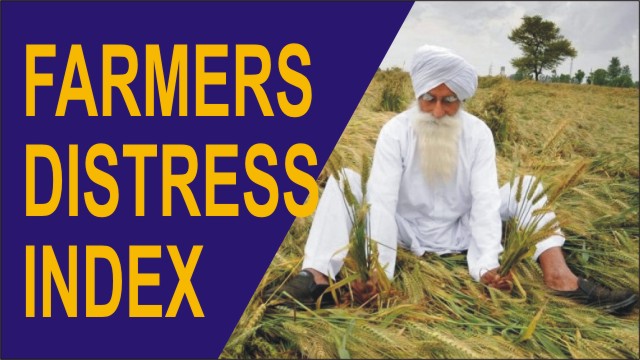
A. AMARENDER REDDY, Ph.D (Economics), FISPRD is a Principal Scientist (Agricultural Economics), ICAR-Centre Research Institute for Dryland Agriculture, Hyderabad. Very recently the Indian Council of Agricultural Research (ICAR) – Central Research Institute for Dryland Agriculture (CRIDA) has developed an App on Farmers Distress Index under NABARD-funded research project on ‘Farmers Distress.

Dr Reddy who led this project in an interview with MOHD NAUSHAD KHAN spoke at length on the idea behind having Farmers Distress Index, how it is going to alleviate farmers distress from all shocks, the methodology involved in identifying the distress level, and will it help to address the issue of farmers suicide.
What was the idea behind having such an App on farmers’ distress?
With the increase in climate extremes and fluctuating market forces, farmers are exposed to many shocks to their household incomes, like frequent droughts, prolonged dry spells, floods, diseases and pest attacks and price fluctuations.
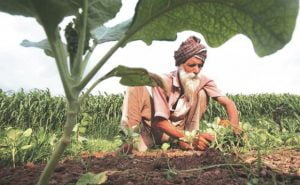 As farmers are moving out of subsistence farming to commercial farming like cultivation of commercial crops like chilies, cotton, vegetables, horticultural crops, which not only require huge initial investments, but also expose them to market fluctuation leading to possibilities of farmers’ distress. For example, chilli cultivation costs at least one lakh twenty-five thousand rupees, if yield and prices are good, they get higher returns to cover costs and also get a reasonable profit, but if there is crop loss due to pests and diseases or market prices are low, they may lose their huge investment of more one lakh per acre. If the farmer is cultivating five acres, there is a possibility of losing five to seven lakhs.
As farmers are moving out of subsistence farming to commercial farming like cultivation of commercial crops like chilies, cotton, vegetables, horticultural crops, which not only require huge initial investments, but also expose them to market fluctuation leading to possibilities of farmers’ distress. For example, chilli cultivation costs at least one lakh twenty-five thousand rupees, if yield and prices are good, they get higher returns to cover costs and also get a reasonable profit, but if there is crop loss due to pests and diseases or market prices are low, they may lose their huge investment of more one lakh per acre. If the farmer is cultivating five acres, there is a possibility of losing five to seven lakhs.
The frequency of these types of farmers distress is increasing and needs to be predicted and accurately anticipated for taking effective preventive steps so that the distress will be contained before it actually spread to wider areas and farmers. India is a huge country with highly diversified agro-ecologies and cropping pattern, every year in one or other area there is a possibility of exposure to hazards and its consequence of crop failures and income shock to farmers. Under those circumstance, if a system is developed to pre-warn different stakeholders including central, state, local and also non-government agencies about the future occurrence of farmers distress in a particular block/district, they can take timely preventive measures, so that the wide spread farmers distress can be avoided totally.
Farmers Distress Index is a relative concept, based on this index government and other stakeholders may classify the areas in to high, medium and low distressed areas and focus first on high distress areas followed by medium and low distressed areas for their operations and investments. It is very important to completely eliminate the farmers distress, so that they can focus on growing their household incomes, invest in children education and long-term growth opportunities of their families. Whole idea is zero tolerance for farmers distress anywhere across India.
What would be the methodology of identifying farmers with distress and what would be the problem-solving mechanism?
As a first step, we search for different local newspapers, social media and other news platforms for sporadic or occasional reports of incidence of farmers distress, news items indicating forced recovery of debt, distress sale of livestock, out-migration or incidence of attempt to suicide etc., will be tracked. If these incidences are concentrated in a particular area or community, then we do telephonic interviews on seven dimensions of the distress.
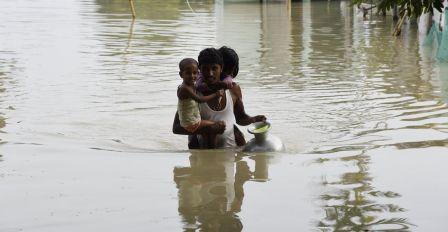 Namely exposure to risk like droughts, floods, adaptive capacity of farmers and local governments, sensitivity, mitigation and adaptation strategies like growing of contingency crops if main crop is failed, triggers for immediate distress like huge health related expenditure, socio-psychological factors and impacts.
Namely exposure to risk like droughts, floods, adaptive capacity of farmers and local governments, sensitivity, mitigation and adaptation strategies like growing of contingency crops if main crop is failed, triggers for immediate distress like huge health related expenditure, socio-psychological factors and impacts.
All exposures to risk like drought may not leading to distress, if farmers having sufficient adapting capacity and follow mitigation and adaptation strategies. Similarly marginal, dry land and commercial crops farmers are more sensitive to exposure to risk, as their production and prices fluctuate widely. Sometimes, specific triggers like ill health of bread winner of the expose entire family to huge expenditure and debt and forced in to distress. Sometimes socio-psychological issues like repeated pressure and public insult from money lenders for repayment of debt resulted in farmers feel insulted and isolated from the society, which may further deteriorate families’ prospects to sustain and cope with farmers’ distress.
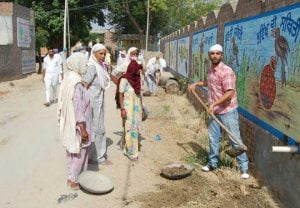 Many times, government schemes like public works programmes (MGNREGA), compensation for crop loss, timely payment of claims under crop insurance, enhanced rationing under Public Distribution System (PDS) etc may alleviate farmer’s distress. Our distress index captures all these predictive indices to anticipate wider farmer’s distress.
Many times, government schemes like public works programmes (MGNREGA), compensation for crop loss, timely payment of claims under crop insurance, enhanced rationing under Public Distribution System (PDS) etc may alleviate farmer’s distress. Our distress index captures all these predictive indices to anticipate wider farmer’s distress.
Our Framers Distress Index, measures situation of farmers on these seven predictive indicators for distressed farmers, then suggest intervention strategies and action points by the local, state and central governments to take preventive measures in the locality.
How do you think that such aApp on farmers’ distress index can reduce suicide rates in India?
Based on the early media (both print and social) reports on occasional and sporadic incidences of debt repayment problems, crop losses, severe loss to crops and incomes in a particular area, the team will do telephonic interviews on these seven dimensions of farmers distress in the locality especially among marginal and tenant farmers. Then based on four Farmers Distress Index, we predict and anticipate the severity and spread of farmers distress and whether it is having potential to spread widely or is just an individual household specific incidence. If it is individual specific, it may not require area wide action, but if it is likely to spread to many farmers in the area, then we can sensitise the local authorities to take preventive measures, so that it will stop spread of farmers’ distress.
Will this index be of any help to those farmers who are in distress due to MSP issue?
Minimum Support Price (MSP) is a price set by the government to ensure that farmers receive a minimum price for their agricultural produce. The MSP acts as a safety net for farmers by providing them with a guaranteed minimum price for their crops, irrespective of market fluctuations or supply-demand dynamics. The government sets the MSP based on factors like production costs, market prices, input costs, and the overall welfare of farmers.
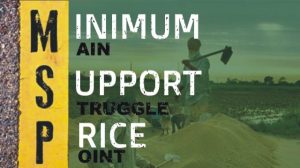
The MSP is announced for 23 crops before the sowing season begins. It serves as a reference price for farmers, and if the market prices for their produce fall below the MSP, they can sell their crops to designated procurement agencies at the minimum support price.
The MSP aims to ensure the income security of farmers, encourage agricultural production, and stabilize market prices by preventing distress sales.
However, it is effectively implemented for only for paddy and wheat, for the remaining crops it acts as just a signal price to market participants and hence this index also covered price fluctuations as its one of the components and gives some indication whether farmers distress is due to low sale price and distress sale.
What would be the short- and long-term impact of such distress index?
With the formal adoption of Farmers Distress Index (FDI), governments are able to identify locations/areas with occasional incidences of farmers distress, which will be followed by in-depth analysis of whether the distress is an isolated individual incidence or having potential to spread to wider population within the area by collecting information from a random sample of marginal and tenant farmers who are more vulnerable to distress.
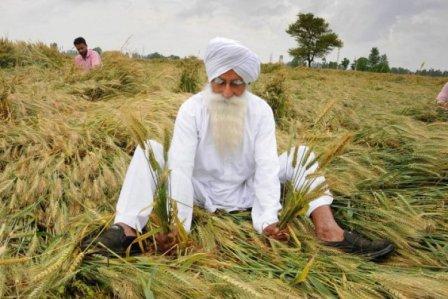 If the distress is confined to an individual farmer due to individual specific causes, there is no need for wider intervention by the government.
If the distress is confined to an individual farmer due to individual specific causes, there is no need for wider intervention by the government.
But if the incidence is having potential for wider spread say, sample farmers showed some early warning signs of farmers distress, then our model will identify and diagnose the root causes of the distress on seven dimensions as mentioned earlier like exposures to hazards, adaptive capacity, mitigation and adaptation strategies, what are the trigger points, who are the farmers more sensitive and probable extent of impact and where government intervention is required.
The probable government interventions are immediate enhancement of public work days under MGNREGA, enhanced food subsidy and ration under Public Distribution System (PDS), moratorium on lean repayment, immediate compensation etc.
The medium-term interventions are adoption of contingency crop planning, development of alternative employment opportunities and local infrastructure development.
As agrarian distress may vary from place to place and the nature of distress may also vary from one place to another. Do you think this distress index is sufficient to address all such concern or there is a need to have such aApp in all states?
While constructing the FDI, we are trying to include variables which are wider predictive power to anticipate future farmers distress in all situations like both dryland and irrigated farmers and areas, equally applicable to both hilly areas and plains, applicable to both small and large farmers as well as tenant farmers.
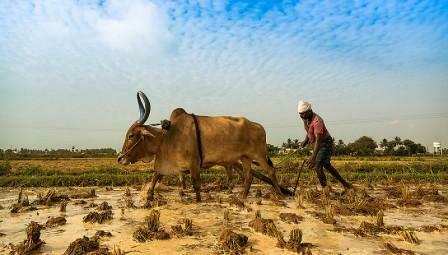 Basically, we track predictive indicators like debt-income ratio, crop loss, alternative sources of income, burden of loan repayment, health and other huge expenditure shocks, socio-psychological factors like feeling of family burden, socially isolated within family and in community, which are universal in their predictive power in anticipating the distress. However, any one organisation or state can adopt this basic framework and adapt it or improve it to more suitable for location specific conditions.
Basically, we track predictive indicators like debt-income ratio, crop loss, alternative sources of income, burden of loan repayment, health and other huge expenditure shocks, socio-psychological factors like feeling of family burden, socially isolated within family and in community, which are universal in their predictive power in anticipating the distress. However, any one organisation or state can adopt this basic framework and adapt it or improve it to more suitable for location specific conditions.
Is there any study available in any parts of the world to suggest that such kind of distress index has helped the farmers in distress?
There are many indices at district level or regional level like district vulnerability indices, risk indices or hazard indices, district preparedness indices. However, they are all based on historical data and useful for identification and classification of districts in to more vulnerable and less vulnerable districts to climate change or natural hazards like droughts and floods.
This particular farmer’s distress index is a real-time index which is based on real time data capture from the farmers and to anticipate possibilities of wide spread farmers distress before 3-4 months of actual occurrence and come out with intervention strategies for government and other stakeholders to take preventive measures so that there will not be any farmers’ distress.
Which existing modal do you think India should adopt from anywhere in the world to address agrarian crisis or India should develop its own model to set an example before the world?
India is now developing as role model for other developing countries. Most of the models developed in developed countries like USA, EU and other developed countries are not applicable to India, as Indian agro-ecological and socio-cultural factors of farmers are entirely different.
Most of the Indian farmers are small and marginal and tenancy is increasing, our agro-ecological conditions are entirely different. Hence, we need to develop our own models to address our own local problems. Rather are becoming role model for other developing countries in both Asia and Africa with similar conditions. ![]()
(The views expressed are personal.)
___________
Also Read:
Drug Menace Cannot Be Addressed Without Addressing the Root Cause of Supply Chain
Deliberate Destruction of Indian Railways
Mughal Gardens – Name Changed, But Why?
Will SC Order Be Implemented When There Is Political Patronage For Hate Speech?
Time to build on synergy of ground energy & politics
Punjab – How a deadly cocktail of Agri-Water-Energy nexus going to destroy it?
Disclaimer : PunjabTodayTV.com and other platforms of the Punjab Today group strive to include views and opinions from across the entire spectrum, but by no means do we agree with everything we publish. Our efforts and editorial choices consistently underscore our authors’ right to the freedom of speech. However, it should be clear to all readers that individual authors are responsible for the information, ideas or opinions in their articles, and very often, these do not reflect the views of PunjabTodayTV.com or other platforms of the group. Punjab Today does not assume any responsibility or liability for the views of authors whose work appears here.
Punjab Today believes in serious, engaging, narrative journalism at a time when mainstream media houses seem to have given up on long-form writing and news television has blurred or altogether erased the lines between news and slapstick entertainment. We at Punjab Today believe that readers such as yourself appreciate cerebral journalism, and would like you to hold us against the best international industry standards. Brickbats are welcome even more than bouquets, though an occasional pat on the back is always encouraging. Good journalism can be a lifeline in these uncertain times worldwide. You can support us in myriad ways. To begin with, by spreading word about us and forwarding this reportage. Stay engaged.
— Team PT


Copyright © Punjab Today TV : All right Reserve 2016 - 2024 |